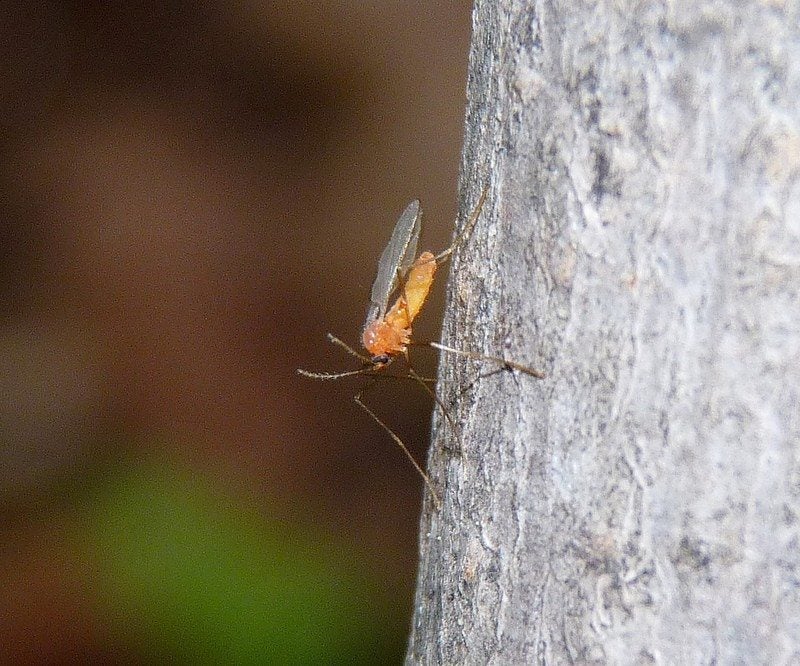Holly Berry Midge Pests: Learn About Holly Midge Symptoms And Control


In autumn, holly shrubs take on a new character when the rich, green foliage becomes a backdrop for large clusters of red, orange, or yellow berries. The berries brighten landscapes at a time when garden color is scarce and provide a feast for birds and other wildlife. When berries fail to ripen into their bright fall and winter colors, the culprit is a small insect called a holly berry midge (Asphondylia ilicicola).
What is Holly Berry Midge?
Adult holly berry midge pests are small flies that resemble mosquitoes. These two-winged flies measure 1/14 to 1/8 inch (2-3 mm.) in length with long legs and antennae. Female holly berry midges lay their eggs inside holly berries, and when the maggots hatch, they feed on the flesh inside the berries. The berries may continue growing to nearly normal size, but the feeding activity of the larvae prevents them from turning to their bright, ripe colors. Birds and squirrels that would normally enjoy eating the tasty fruit aren't interested in green berries, so the infested fruit remains on the shrub.
Berry Midge Control
Holly berry midge control is difficult because there is no insecticide that effectively eliminates the larvae within the berries. The larvae develop slowly in fall and winter. When warm weather returns in spring, they complete their development and emerge from the berries as adult midges, ready to lay eggs in the next season's berries. The best way to control these berry midge bugs is to break their life cycle before they have a chance to mature. As soon as you see holly midge symptoms, pick the green berries from the shrub and destroy them. You can burn the berries or dump them in a bucket of soapy water to soak for a few days before bagging and discarding them. Don't put the berries in a compost pile where the berry midge bugs may survive long enough to mature. Some horticulturalists recommend spraying infested hollies with dormant oil in late winter before the shrub puts on new growth, but dormant oil alone won't eliminate the problem. If holly berry midge pests consistently infest shrubs in your area, consider planting midge-resistant cultivars. Your local garden center or nursery can help you select midge-resistant hollies.
Sign up for the Gardening Know How newsletter today and receive a free copy of our e-book "How to Grow Delicious Tomatoes".

Jackie Carroll has written over 500 articles for Gardening Know How on a wide range of topics.